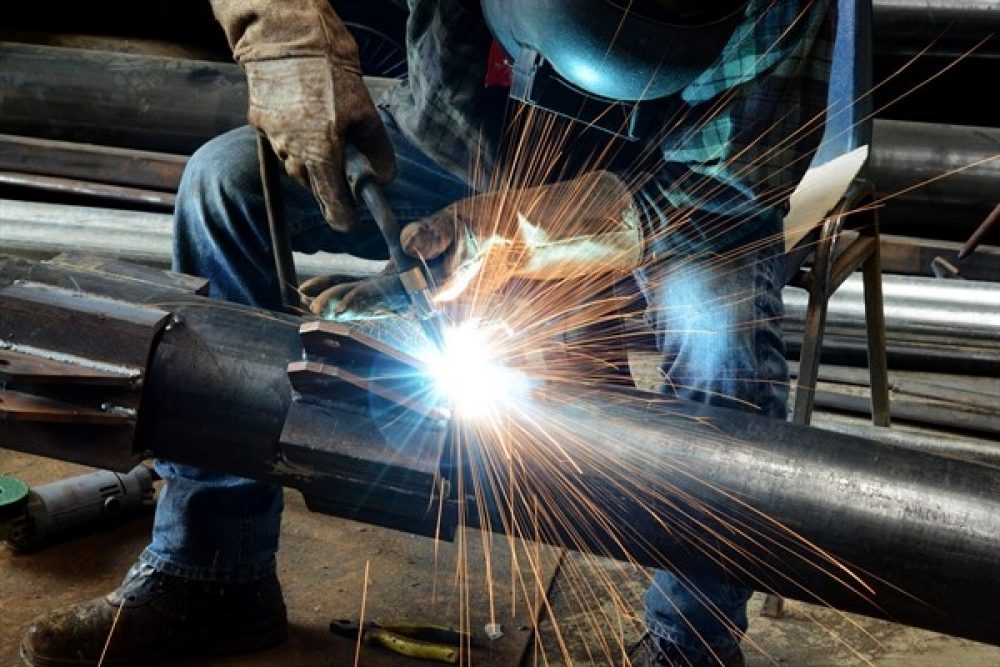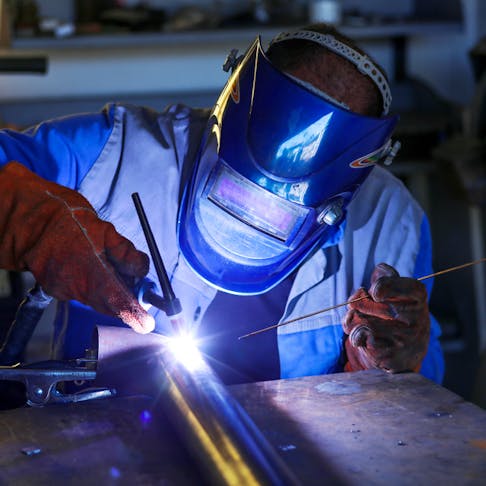Early defect indicators and what Belgrade can do about them
Wiki Article
Usual Welding Repair Work Issues and Just How to Address Them Successfully
Welding repairs typically come across a series of issues that can endanger the honesty of the end product. Usual troubles consist of inadequate penetration, porosity, and imbalance, to name a few. Each problem provides one-of-a-kind challenges that call for certain strategies for resolution. Comprehending these concerns is necessary for welders aiming to enhance their end results and abilities. This conversation will check out these usual welding repair problems and efficient approaches to address them.Insufficient Infiltration
Poor infiltration occurs when the weld steel stops working to completely fuse with the base product, resulting in weak joints and possible architectural failings. This problem typically originates from not enough warmth input, incorrect electrode angle, or inappropriate welding rate. Welders may encounter insufficient penetration because of a mistake of the required specifications for a certain product density or kind. In addition, contamination on the base product's surface can impede reliable bonding, aggravating the issue. To deal with poor infiltration, welders must guarantee suitable setups on their equipment and keep a clean work surface. Routine examination of welds is recommended to identify any shortages early, permitting timely modifications and the prevention of compromised architectural integrity in welded assemblies.Porosity
Porosity is an usual problem in bonded joints that manifests as tiny gas bubbles trapped within the weld metal. This defect can jeopardize the stability of the weld, leading to minimized stamina and potential failing under stress and anxiety. Montana Mobile Welding and Repair Belgrade Welding. Porosity generally occurs from contamination, wetness, or incorrect welding strategies, which enable gases to escape into the molten weld swimming pool. To resolve porosity, welders must ensure correct surface preparation, keep a tidy functioning atmosphere, and make use of appropriate welding criteria. Furthermore, choosing the ideal filler product and shielding gas can reduce gas entrapment. Regular evaluation and testing of welds can aid determine porosity early, guaranteeing prompt restorative actions are taken, therefore preserving the top quality and reliability of the welded frameworkMisalignment
Imbalance in welding can emerge from numerous aspects, consisting of incorrect configuration and thermal expansion. Recognizing the origin creates is important for effective resolution. Numerous correction techniques are readily available to realign components and assure structural honesty.Root causes of Misalignment
Welding misalignment commonly stems from a variety of underlying problems that can jeopardize architectural honesty. One main cause is inappropriate fit-up of parts prior to welding, which can result in gaps and uneven surface areas. Variants in thermal expansion throughout the welding process can likewise cause distortion, especially if the materials being signed up with have different coefficients of development. In addition, insufficient fixturing and clamping may stop working to hold parts securely in position, resulting in activity throughout welding. Badly kept devices, consisting of welding equipments and tools, may introduce variances in the weld bead, additional adding to imbalance. Driver error, stemming from insufficient training or experience, can also play a significant function in creating misaligned welds.
Modification Methods Offered
Addressing misalignment efficiently calls for a mix of restorative techniques customized to the particular issues at hand. One common technique is using components or jigs to hold components in the proper placement throughout welding, making sure consistent alignment. Additionally, pre-heating the products can aid minimize distortion and boost fit-up. For substantial misalignment, mechanical adjustment strategies, such as making use of hydraulic jacks or clamps, can be used to correct the setting before welding. Post-weld warmth therapy may also be necessary to relieve stresses brought on by misalignment. Careful assessment and modification throughout the setup phase can stop imbalance concerns from becoming significant issues, promoting a smoother welding process and boosting general architectural integrity.Distortion
Distortion is an usual obstacle in welding that can arise from various aspects, consisting of uneven home heating and cooling. Recognizing the sources of distortion is important for carrying out efficient prevention methods. Addressing this concern not just boosts architectural stability however additionally improves the overall high quality of the weld.Root causes of Distortion
When subjected to the extreme warmth of welding, materials commonly undertake changes that can cause distortion. This sensation mainly occurs from thermal growth and tightening during the welding process. As the weld area warms up, the material broadens; upon cooling, it contracts, which can produce internal stresses. On top of that, uneven home heating throughout a work surface can intensify these stress and anxieties, causing bending or bending. The sort of material also plays a substantial function; metals with varying thermal conductivity and coefficients of expansion might react in a different way, resulting in uncertain distortions. Furthermore, inadequate joint style and poor fixturing can add to misalignment during welding, boosting the possibility of distortion. Recognizing these reasons is necessary for reliable welding fixing and prevention techniques.Prevention Techniques
Reliable prevention strategies for distortion throughout welding concentrate on regulating warm input and making sure appropriate joint style. Maintaining a constant heat input assists to reduce thermal development and tightening, which can bring about distortion. Utilizing methods such as preheating the work surface can also minimize the temperature gradient, advertising consistent heating. In addition, picking proper joint designs, such as T-joints or lap joints, can boost security and reduce stress focus. Carrying out proper fixturing to secure the work surfaces in position additionally aids in maintaining alignment during the welding procedure. Staggered welding sequences can disperse heat a lot more equally, avoiding localized distortion. By applying these techniques, welders can greatly decrease the likelihood of distortion and improve the total quality of their welds.Fracturing
Cracking is a typical issue come across in welding repair work, commonly resulting from various factors such as inappropriate cooling prices, material choice, or poor joint prep work. The event of splits can substantially endanger the integrity of the weld, leading to potential failures throughout operation. To resolve this concern, welders have to initially assess the origin, making sure that materials are suitable and properly chosen for the certain application. Additionally, controlling the air conditioning price during the welding procedure is crucial; quick cooling can cause anxiety and bring about splitting. Correct joint design and preparation also contribute to minimizing the threat. Executing these techniques can improve weld top quality and sturdiness, inevitably reducing the possibility of fracturing in completed weldments.
Incomplete Fusion
A considerable issue in welding repairs is incomplete fusion, which occurs when the weld metal does not pop over to these guys appropriately bond with the base material or previous weld passes - Welding. This problem can bring about weaknesses in the joint, potentially compromising the honesty of the bonded framework. Factors adding to insufficient combination include insufficient heat input, improper welding method, and contamination of the surface areas being joined. To resolve this issue properly, welders ought to ensure appropriate pre-weld cleansing and surface prep work, in addition to change their welding parameters to attain sufficient infiltration and fusion. Regular evaluation throughout the welding process can likewise assist identify insufficient fusion early, enabling for prompt restorative procedures to boost the total high quality of the weldOverheating
While welding repair work can enhance structural honesty, overheating presents a substantial challenge that can cause product degradation. Excessive warm during welding can alter the mechanical residential or commercial properties of metals, causing minimized stamina, increased brittleness, and warping. This sensation is specifically critical in high-stress applications where architectural reliability is critical. Determining getting too hot can entail visual examinations for discoloration or distortion, in addition to keeping an eye on temperature level throughout the welding process. To minimize the dangers connected with overheating, welders ought to employ suitable methods, such as managing warmth input, adjusting travel rate, and utilizing suitable filler materials. Additionally, applying pre- and post-weld warmth treatments can help recover product residential or commercial properties and improve the general top quality of the repair work, ensuring long-term performance and safety.Often Asked Questions
What Are the Common Indications of a Welding Defect?

Just How Can I Evaluate My Welds for High quality?
To check welds for top quality, one can make use of visual evaluations, ultrasonic testing, and radiographic techniques. Each technique stick welder for sale ensures structural stability, identifies problems, and validates adherence to defined criteria, inevitably improving the integrity of the bonded joints.What Safety Precautions Should I Take While Welding?
When welding, one should prioritize safety by wearing appropriate individual safety tools, making certain proper air flow, securing combustible products away, keeping a tidy work area, and knowing surroundings to protect against injuries and mishaps.Can I Repair a Weld Without Redoing the Entire Joint?
Fixing a weld without renovating the entire joint is feasible, relying on the damages (Belgrade Fabrication). Methods such as grinding, adding filler material, or official statement utilizing a welding procedure can efficiently attend to particular problems while maintaining the bordering frameworkWhat Devices Are Vital for Reliable Welding Services?
Vital tools for effective welding repair services consist of a welding device, cable brush, grinder, safety gear, clamps, and filler materials. Each tool plays a crucial role in making sure top quality and safety during the fixing procedure. Porosity normally develops from contamination, dampness, or incorrect welding methods, which permit gases to run away right into the molten weld pool. Improperly conserved devices, including welding makers and tools, may introduce incongruities in the weld bead, additional contributing to misalignment. When subjected to the extreme warmth of welding, materials commonly undergo changes that can lead to distortion. Breaking is an usual problem run into in welding repair services, usually resulting from numerous variables such as improper air conditioning prices, product selection, or insufficient joint preparation. A significant concern in welding repair services is insufficient fusion, which occurs when the weld metal does not sufficiently bond with the base product or previous weld passes.Report this wiki page